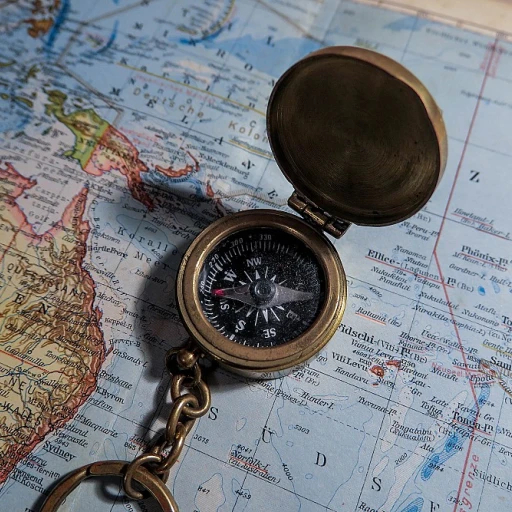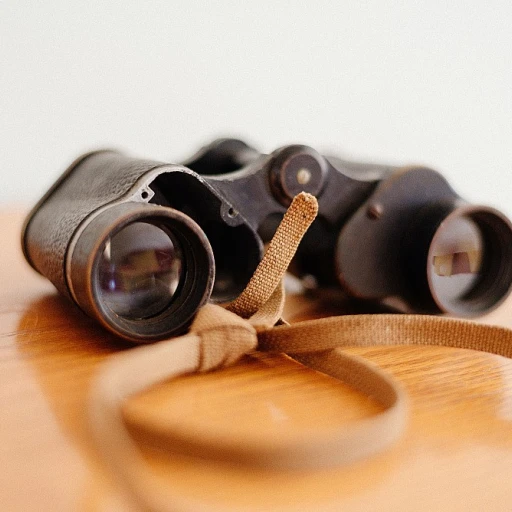
Understanding strategic foresight
Getting a grip on the concept
Strategic foresight might sound like something cooked up in a sci-fi lab, but in reality, it's just a fancy term for predicting the future of your business. It’s about spotting opportunities and avoiding pitfalls before they hit you like a freight train. According to a Harvard Business Review study, companies that use strategic foresight are 33% more profitable and achieve a 200% higher growth rate compared to their peers. This ain't just numbers; it shows the tangible impact of being ahead of the curve.Why it matters more than ever
In a world where changes come quicker than a hiccup, having the ability to anticipate what's next is priceless. Think about it: Google, Apple, and other tech giants didn't become powerhouses by accident. They knew where tech was heading and steered their ships accordingly. If you're not predicting, you're reacting—and that puts you a few steps behind the competition.The foundation of strategic foresight
At its core, strategic foresight involves looking at trends, understanding changes in the market, and preparing for different futures. Imagine it like playing chess, where you plan several moves ahead. The big guns use tools like scenario planning, Delphi method, and environmental scanning. In essence, it’s combining data and intuition to make educated guesses about the future.The nitty-gritty of how it works
First off, you need a solid base of data. A PwC survey revealed that 67% of executives believe data-driven insights are essential for foresight. Then, layer in market trends—think demographic shifts, technological advancements, and economic changes. All this information helps in painting a picture of what could be next. Not to forget, engaging your whole team in this process often brings different perspectives to the table, making your foresight even more robust. To keep the conversation going, why not check out our post on how CEOs can drive innovation without breaking the bank?Tools and techniques for strategic foresight
Embracing scenarios and trend analysis
Strategic foresight isn't just a fancy term; it's all about anticipating changes before they knock you off balance. One essential part of this is scenario planning. Business strategists often use it to imagine multiple futures and plan accordingly. Imagine this: back in 2005, Shell used scenario planning to predict energy market futures, allowing them to pivot swiftly when the winds of change blew unexpectedly. It's all about being prepared!
Horizon scanning techniques
Another kickass technique is horizon scanning. What's that, you ask? It's about scanning the periphery for weak signals that might turn into substantial threats or opportunities. According to a 2019 Deloitte report, corporations that employed horizon scanning were 25% more responsive to market changes. Interesting, right? These businesses identify trends early, from tech innovations to shifts in consumer behavior, ensuring they're not caught off guard.
Competitive intelligence gathering
And then we have competitive intelligence. Sounds a bit spy-like, doesn't it? It's the practice of gathering actionable information about your competitors and using it to make informed strategic decisions. Gartner’s 2020 research indicated that companies implementing competitive intelligence strategies gained a 15% edge over their rivals. Remember how Netflix outpaced Blockbuster? They were masters in competitive intelligence!
Crowdsourcing and collaboration
Importantly, don't underestimate the power of crowdsourcing ideas from your stakeholders—employees, customers, even the public. Lego’s Ideas platform is a prime example of this. By letting fans submit and vote on new design ideas, Lego taps into a wellspring of fresh and diverse perspectives that keeps them ahead of the game. According to a 2021 HBR report, companies utilizing such collaborative techniques saw a 20% increase in innovation and creativity.
Leveraging big data and analytics
In today’s tech-savvy age, leveraging big data and analytics is non-negotiable. Businesses can anticipate trends with amazing precision, thanks to data-driven insights. McKinsey highlights that companies that embrace data analytics are more than 20% more profitable. Think of Amazon’s recommendation engine that knows what you want before you do!
Dive deeper into these strategies at navigating the luxury retail market: key strategies for success to see how these techniques play out in a dynamic industry. These tools and techniques are your tradecraft for mastering the art of strategic foresight.
Case studies of successful strategic foresight
Riding the waves: real-life wins in strategic foresight
Apple's move from computers to consumer electronics
You know Apple, right? The big fruit in the tech basket. Back in 2001, Steve Jobs and his team shifted gears from strictly computers to consumer electronics. This wasn’t just a casual pivot. It was foresight in action. The iPod sparked a massive change, leading to innovations like the iPhone and iPad. Today, over 50% of Apple's revenue comes from iPhones alone (source: Apple Annual Report 2022).
Netflix: from DVDs to streaming giant
Remember when Netflix used to mail DVDs? Yeah, seems like a lifetime ago. Around 2007, they started to see the streaming wave coming. Instead of sticking to their DVD guns, they invested heavily in streaming technology. By 2022, they had over 220 million subscribers worldwide (source: Netflix Investor Relations). That's some serious foresight leading to major market dominance.
Amazon's jump from books to... well, everything
Amazon started off selling books online. Simple, right? But Jeff Bezos had bigger fish to fry. They soon expanded into a multitude of goods and services, forming what we know today as the Amazon Empire. In 2021, Amazon's net sales reached $469.8 billion, a massive leap from just selling books (source: Amazon Annual Report 2021). Strategic foresight helped Amazon diversify and thrive beyond a singular product offering.
Case study: Tesla's bet on sustainable energy
Tesla's a game-changer. When they went all-in on electric cars, many thought Elon Musk was a tad too ambitious. Fast forward a few years, and Tesla's market value surpassed $1 trillion in October 2021 (source: CNBC). Their foresight into sustainable energy and electric vehicles not only paid off but also reshaped the car industry entirely.
Learning from the big players
Seeing these big wins, you might be itching to jump on the strategic foresight train. And here's a handy little resource for you: unlocking performance through strategic alignment. Dive into these insights and get your strategic juices flowing. Who knows, maybe your next big pivot is just around the corner.
Challenges and solutions in implementing strategic foresight
Common implementation roadblocks
First off, many leaders run into resource limitations. Whether it's budget constraints or a lack of personnel with the right skill set, these obstacles weigh heavy. A McKinsey report found that 43% of executives identified inadequate resources as the top barrier to implementing strategic foresight.
Resistance to change
We all know that not everyone likes change. When your team or stakeholders resist new strategic insights or plans, it hampers progress. A study published by the Harvard Business Review highlighted that 50% of CEOs struggle with resistance when implementing new strategies. The key to overcoming this? Communication and involvement at all levels helped one company, 3M, in significantly reducing internal pushback.
Data overload
With so much information at our fingertips, knowing what's useful can be challenging. It's easy to fall into the trap of 'analysis paralysis.' According to a Deloitte study on strategic thinking, about 60% of companies waste valuable time due to data overload. A simple solution is to prioritize relevant data sources and rely on key metrics.
Lack of executive buy-in
Even if you have the best strategic foresight plan in place, it won't go far without top executives' backing. As mentioned in earlier parts of this series, fostering a culture that values foresight can mitigate this issue. Real-life case? Think of Kodak, whose lack of executive buy-in for digital cameras eventually led to their downfall. Conversely, Netflix's early and consistent foresight into streaming services paid off big time. A key takeaway from these examples is that executive buy-in isn't just beneficial—it's critical.
Measuring impact
Quantifying the impact of strategic foresight initiatives can be tricky. You need clear, actionable metrics to prove effectiveness. According to a Harvard Business Review article, only 35% of companies effectively measure the success of their strategic initiatives. Utilizing KPIs and benchmarks can offer clear insights into performance, making it easier to adjust strategies as needed.














-large-teaser.webp)